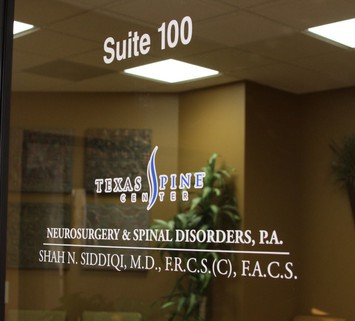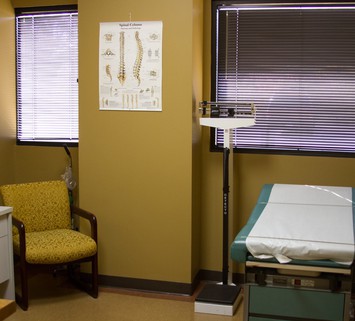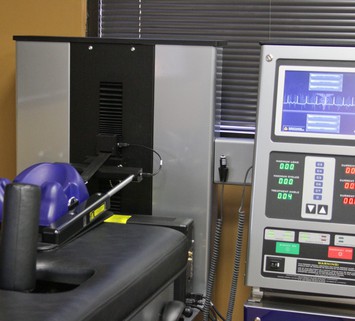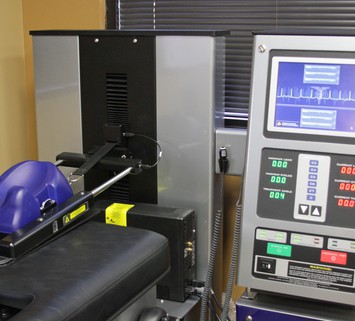If you are suffering from severe back pain, the experts at Texas Spine Center know that finding the key to pain relief is very important to you. Your pain management and recovery are also important to us, and being aware of your treatment options is the first step in living without back pain. In this article, you will learn about “Spinal Fusion Surgery,” a method neurosurgeons sometimes use to alleviate the discomfort of back pain sufferers. You will learn when spinal fusion is necessary, how the fusion procedure works, and who qualifies for the treatment so you can determine if spinal fusion surgery is right for you.
What is Spinal Fusion Surgery?
Put very simply, spinal fusion is a spine surgery in which two or more adjacent vertebrae are bound together to create a more solid, stable, singular bone. During this procedure, your spine surgeon will take a bone graft, often from your hip, and place the small bone fragment(s) in between the vertebrae they wish to conjoin. Most commonly, these vertebrae are located in the lumbar spine, as this section of the spine is subject to lots of wear and tear. However, all levels of the spine can be treated with spinal fusion.
The healing process and binding of the vertebrae work similarly to that of a fractured bone. During the recovery period, the segment of the spine that needs to grow together will be held in place by a network of screws and rods; this framework will act as a guide and support for the bones as they fuse together over time.
Recovery from this procedure can take roughly three to six months, and sometimes more, depending on various factors surrounding your surgery, including pre-existing medical conditions. During the recovery process, you will engage in physical therapy with a trained professional; they will teach you how to sit, stand, walk, and move in a way that will keep your spine in proper alignment. As an additional precaution, your doctor may suggest that you wear a back brace.
When the healing process is complete, patients should be able to return to everyday life with their normal range of motion and flexibility intact. Ideally, the only noticeable difference for the patient, post spinal fusion surgery, should be a reduction in back pain and a more stable spine. While this medical procedure sounds scary and is not as minimally invasive as some surgical options, it is considered a routine operation by experienced neurosurgeons.
Possible Complications of Spinal Fusion Surgery
All major surgeries come with calculated risk, and spinal fusion is no exception. Potential complications of this surgery are:
- Infection
- Poor Wound Healing
- Bleeding
- Blood Clots
- Blood Vessel Damage
- Nerve Damage
- Pain (At Site of Bone Graft)
As always, it is wise to take the recovery process seriously after invasive surgery. Once you are released from the hospital, be sure to follow your physician’s instructions as closely as possible, and be diligent about attending follow-up appointments. Avoid sudden or exaggerated movements in the early stages of recovery, as this may reopen your wounds; ample amounts of rest and getting the proper nutrients will help during the healing process.
Manage your pain responsibly and monitor your incision(s) carefully, looking for any signs of infection. Signs of infection can include:
- Redness, Tenderness, or Swelling at the Site of the Incision
- White, Yellow, or Green Drainage from the Wound
- Fever Higher than 100.4° F
If you are experiencing any of these symptoms after your surgery, contact your doctor immediately and head to a care facility for treatment.
When Should Spinal Fusion be Considered?
Both in theory and in practice, spinal fusion surgery can be used to address the following:
- Curvature of the Spine (i.e., Scoliosis)
- Degenerative Disc Disease
- Spinal Weakness or Instability
- Spinal Stenosis
- Fractures
- Herniated Discs
That being said, spinal fusion should not be the first step that you and your neurosurgeon take to reduce pain. For perspective, spinal fusion is often performed after other spinal surgeries have taken place. In addition to the traditional non-surgical options that can be used for pain management, your spine surgeon should perform several imaging tests and exams to accurately diagnose the cause of your back pain before electing to perform fusion surgery.
Once a specific diagnosis has been made, your surgeon must use their best judgment on whether or not spinal fusion will be an effective method of treatment. In cases where the cause of back pain is unclear, spinal fusion is often ineffective in relieving symptoms.
Working With Physicians You Can Trust
Whether you’re exploring physical therapy options or discussing the possibility of surgery, it is important that you’re working with a board-certified neurosurgeon and a staff of medical professionals you can trust. Knowing you’re in good hands can drastically reduce the stress of undergoing spinal surgery. At Texas Spine Center, your comfort and recovery from back pain matter. Make an appointment to speak with our team of specialists today.



